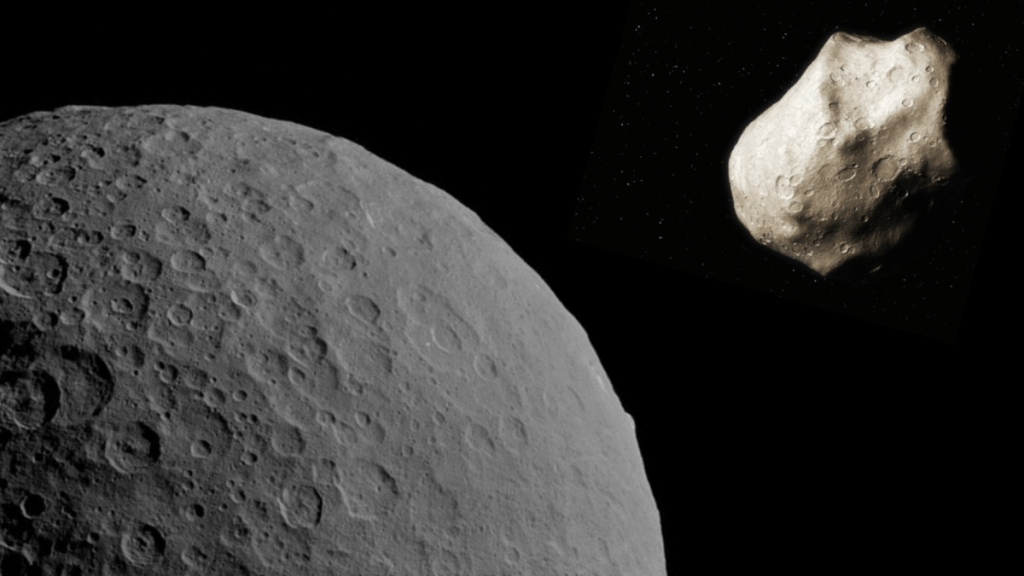
Dwarf planet collision may have sent strange ultra-hard diamonds to Earth (Image Credit: Space.com)
Strange hexagonal diamonds may have been jettisoned into space when a dwarf planet collided with a large asteroid around 4.5 billion years ago.
New research identified the hexagonal diamonds, also called lonsdaleite, in a rare class of meteorites that might come from the mantle of a dwarf planet. Like graphite, charcoal and diamond, lonsdaleite is a particular structural form of carbon. Where diamond’s carbon atoms are arranged in a cubic shape, the carbon atoms in lonsdaleite are arranged in hexagons.
“This study proves categorically that lonsdaleite exists in nature,” Dougal McCulloch, a microscopist at RMIT University in Australia, said in a statement. “We have also discovered the largest lonsdaleite crystals known to date that are up to a micron in size — much, much thinner than a human hair.”
Related: How many meteorites hit Earth every year?
Lonsdaleite was first discovered in the Canyon Diablo meteorite in 1967 and was named after British crystallographer Dame Kathleen Lonsdale. The new research predicts that the hexagonal shape of lonsdaleite makes it harder than regular diamonds with a cubic structure, which might pen new manufacturing techniques to make ultra-hard materials.
The researchers studied lonsdaleite in ureilite meteorites, a rare class of space rocks that scientists think may contain material from the mantle of dwarf planets. The team analyzed slices of these meteorites under the microscope to identify the lonsdaleite and predict its origins, and also studied regularly shaped diamonds found in the rock.
“There’s strong evidence that there’s a newly discovered formation process for the lonsdaleite and regular diamond, which is like a supercritical chemical vapor deposition process that has taken place in these space rocks, probably in the dwarf planet shortly after a catastrophic collision,” McCulloch said. “Chemical vapor deposition is one of the ways that people make diamonds in the lab, essentially by growing them in a specialized chamber.”

The scientists think that lonsdaleite in the meteorites formed from a supercritical liquid at high temperatures and under increased pressures. This extreme environment allowed the lonsdaleite to retain the shape and texture of graphite. Eventually, as the environment cooled and the pressure reduced lonsdaleite was partially replaced by diamond.
The team thinks that industry could mimic the process to produce the unusual mineral.
“Nature has thus provided us with a process to try and replicate in industry,” Andy Tomkins, team leader and a geologist at Monash University in Australia, said in the same statement. “We think that lonsdaleite could be used to make tiny, ultra-hard machine parts if we can develop an industrial process that promotes the replacement of pre-shaped graphite parts by lonsdaleite.”
The team’s research was published Monday (Sept. 12) in the Proceedings of the National Academy of Sciences.
Follow us on Twitter @Spacedotcom and on Facebook.





